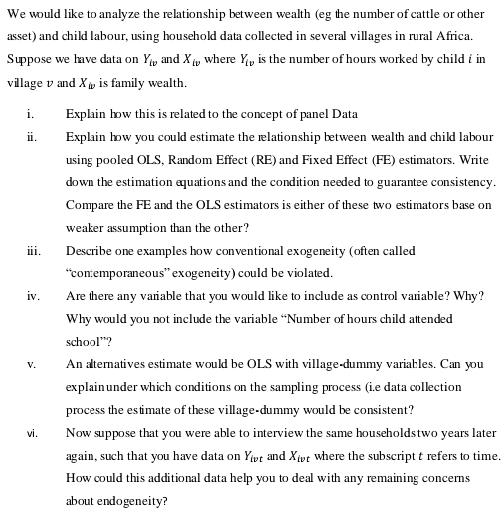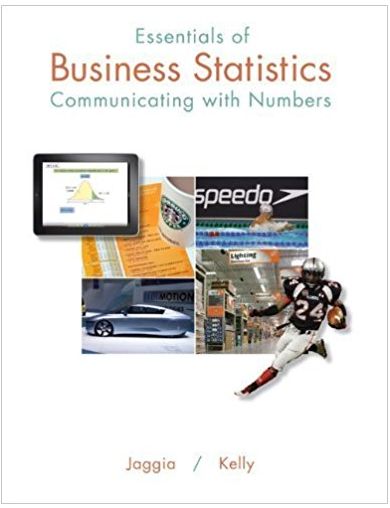We would like to analyze the relationship between wealth (eg the number of cattle or other asset) and child labour, using household data collected

We would like to analyze the relationship between wealth (eg the number of cattle or other asset) and child labour, using household data collected in several villages in rural Africa. Suppose we have data on Y and X, where Y is the number of hours worked by child i in village v and X is family wealth. i. ii. iii. iv. V. vi. Explain how this is related to the concept of panel Data Explain how you could estimate the relationship between wealth and child labour using pooled OLS, Random Effect (RE) and Fixed Effect (FE) estimators. Write down the estimation equations and the condition needed to guarantee consistency. Compare the FE and the OLS estimators is either of these two estimators base on weaker assumption than the other? Describe one examples how conventional exogeneity (often called "contemporaneous" exogeneity) could be violated. Are there any variable that you would like to include as control variable? Why? Why would you not include the variable "Number of hours child attended school"? An alternatives estimate would be OLS with village-dummy variables. Can you explain under which conditions on the sampling process (i.e data collection process the estimate of these village-dummy would be consistent? Now suppose that you were able to interview the same householdstwo years later again, such that you have data on Yivt and Xivt where the subscript t refers to time. How could this additional data help you to deal with any remaining concerns about endogeneity?
Step by Step Solution
3.41 Rating (167 Votes )
There are 3 Steps involved in it
Step: 1
CHILD LABOUR 1 Chaild labour is very big concern in India Lets us know about Child Labour 2 Child la...
See step-by-step solutions with expert insights and AI powered tools for academic success
Step: 2

Step: 3

Ace Your Homework with AI
Get the answers you need in no time with our AI-driven, step-by-step assistance
Get Started


